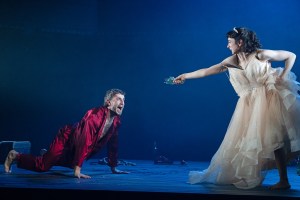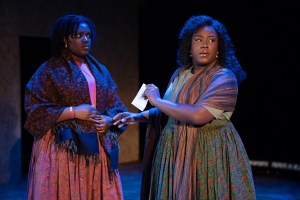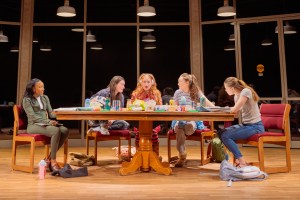Review: Empire: The Musical Falls Way Short of Its Monumental Subject
Caroline Sherman and Robert Hull’s show makes its off-Broadway premiere at New World Stages.
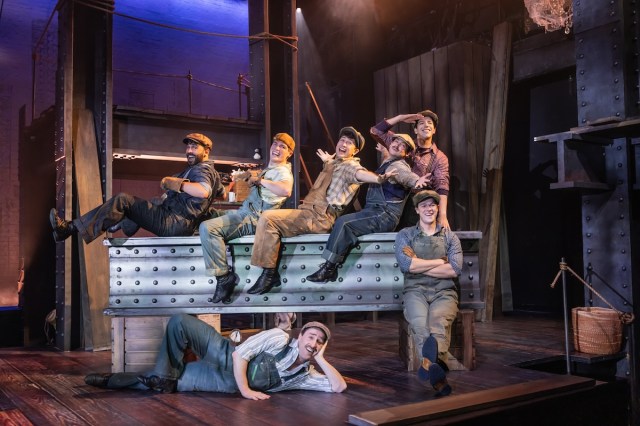
(© Matthew Murphy)
For many long-time New Yorkers, it’s easy to take the Empire State Building for granted as that tourist trap with the ever-changing lights. Thus, the new musical Empire, making its off-Broadway premiere at New World Stages, is useful in reminding us of not only what an astonishing feat of architecture it still is, but how meaningful a symbol of renewal it was when it was built. Alas, that is where the value of Caroline Sherman and Robert Hull’s well-meaning but clumsy show ends.
Sherman and Hull’s show certainly impresses in its historical scope, depicting the tower’s beginnings as a replacement for the Waldorf Astoria Hotel in 1929, its reconceived aim to become the world’s tallest building at the time, and its 13-and-a-half-month construction period. Just as laudable is the historical and social context it sketches in. What seemed impossible in the early years of the Great Depression suddenly became a symbolic necessity. The fact that its construction gave many immigrants and Native Americans jobs added to its allure as a beacon of hope.
The chronicle is framed through the 1976 perspective of Sylvie Lee (Julia Louise Hosack subbing for Jessica Ranville at the performance I attended), the daughter of a worker who died during construction. Because of that, she has an animus towards the skyscraper, especially when she sees her daughter, Lorayne (Kiana Kabeary), set on becoming a construction worker herself. It is through Sylvie Lee’s examination of her father’s photo book that the story of its creation comes to life around her, with her interacting with and observing these historical (or are they?) figures.
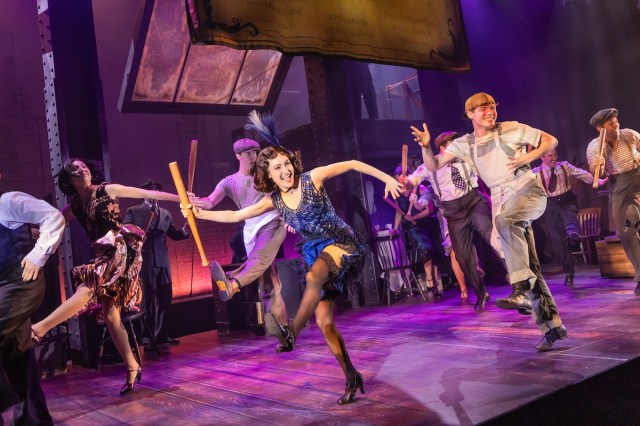
(© Matthew Murphy)
With Sylvie Lee occasionally challenging the positivity of former New York City Governor Alfred E. Smith (Paul Salvatoriello), former General Motors executive John J. Raskob (Howard Kaye), architect Charles Kinney (Albert Guerzon), and others, Empire intriguingly suggests it’ll take an ambiguous view of the Empire State Building. Thanks to a convenient late revelation clearing up a misconception about her father’s death, however, Sylvie Lee ends up as much of a cheerleader for the building as everyone else. This seems less a failure of nerve on the creators’ part than a symptom of how shallow their view of history and sociology is.
That superficiality is evident in not only the broadness of its characterizations, but what appears to be a fudging of history to satisfy contemporary social mores. Though there’s no doubt that Smith, Raskob, and Mayor Jimmy Walker (Devin Cortez) existed, Empire suggests the real motor behind the project was a woman, Frances Belle “Wally” Wolodsky (Kaitlyn Davidson).
Neither Wolodsky nor architect Kinney seem to be real people. Perhaps they’re composites of the unsung figures who led to the Empire State Building’s creation, much like the laborers featured as characters. Dubious authenticity aside, they all come off as stereotypes wholly defined by their ethnicities and perspectives on the project. Irishman Ethan O’Dowd (J Savage) initially sees this as only a job to support his family. Italian Mateo Menzo (Robbie Serrano) is pugnacious and racist. Polish Joe Pakulski (also Cortez) is a dreamer, as is his Mohawk love interest, Rudy (also Kabeary), who disguises herself as a man in order to work alongside him.
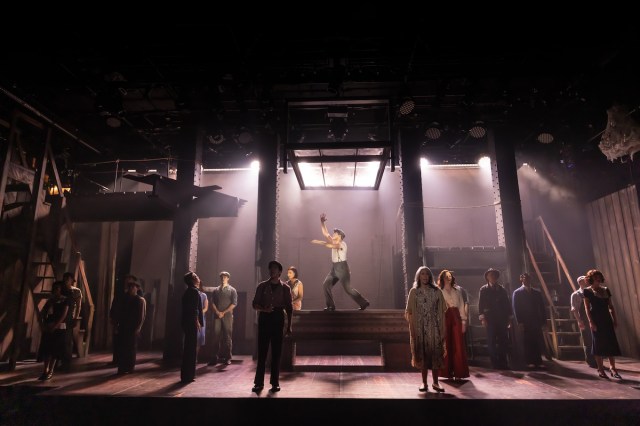
(© Matthew Murphy)
With a stronger score and book, questions about historical accuracy perhaps wouldn’t matter. But whereas Sherman and Hull’s music for Empire is merely bland, their lyrics are worse. It’s one thing to find poetry in the Empire State Building, but another to have a character sing “it’s poetry to think we’re here and they’re down there” instead of coming up with actual poetry. And then there are the book’s frequent attempts at humor. If you find Al Smith proclaiming the need for an “altitude adjustment” the height of sophistication, this show is for you.
The capable cast acquit themselves spiritedly, but they are all let down by their director, acting veteran Cady Huffman. Though scenic designer Walt Spangler’s mess of scaffolding, beams, and one moving windowpane is conceptually clever—the seams of the building made visible—Huffman seems clueless in using those visual elements to tell this story, leading to moments of confusion (the tragic climax of the first act is completely botched). And Lorna Ventura’s choreography essentially comes off as Newsies redux in ensemble numbers.
Maybe that’s a fitting summation of Empire. It’s frustrating enough that you might find yourself not only wishing that you were watching other shows but staring at the actual Empire State Building instead.



